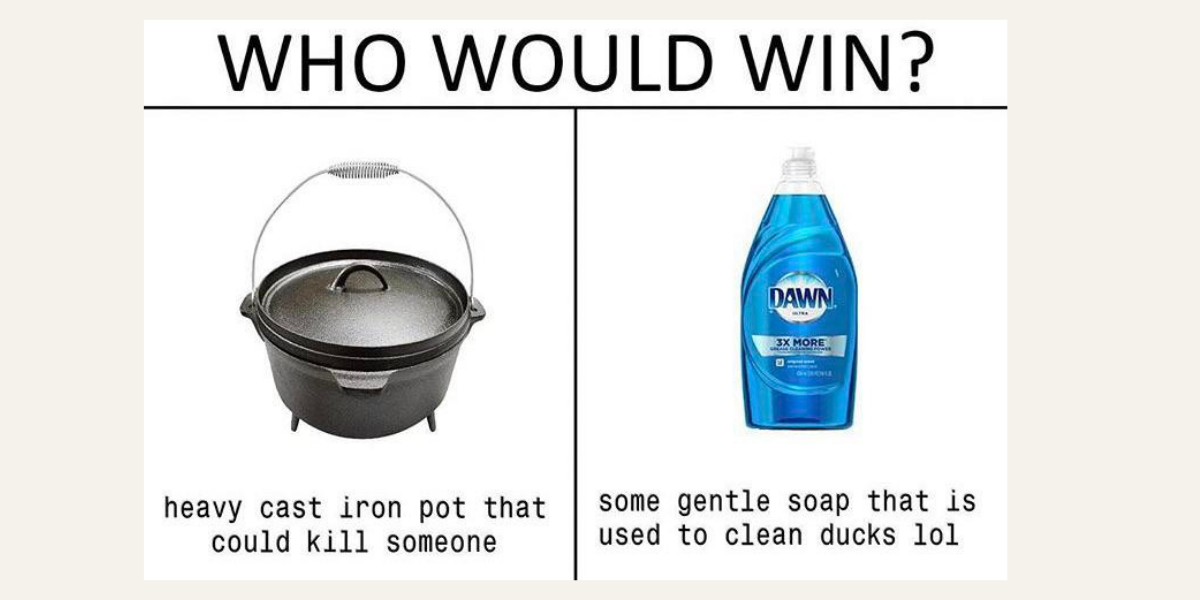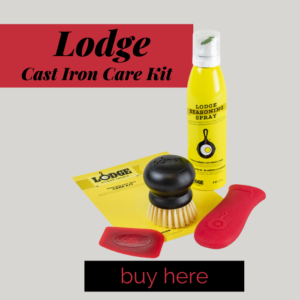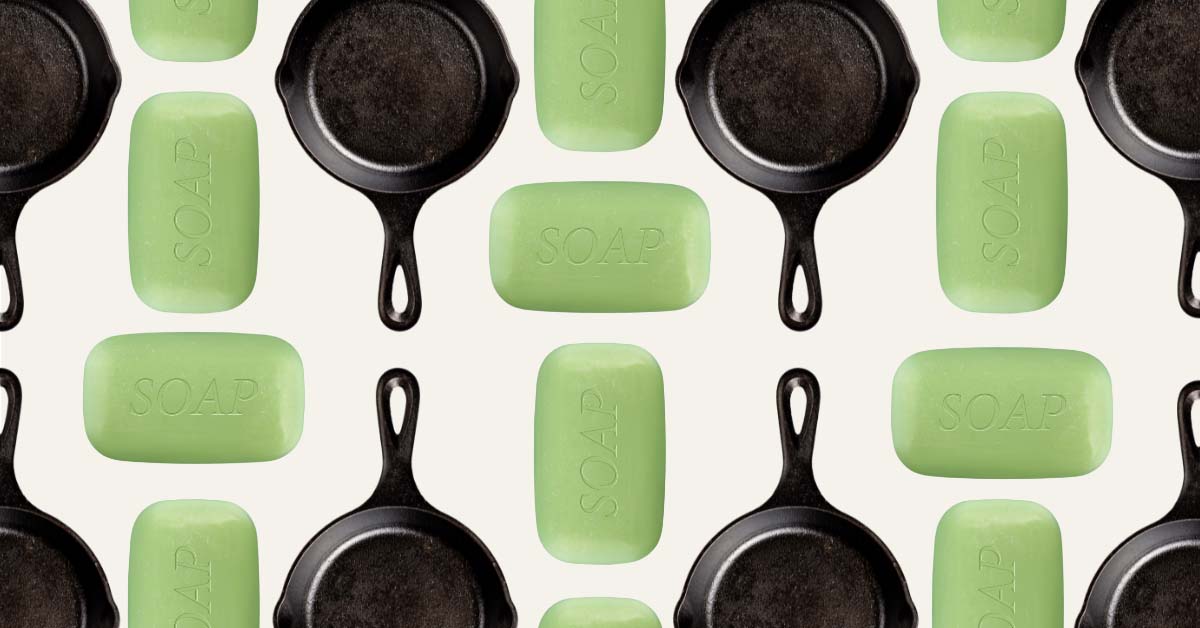Congratulations- you just became the owner of your first cast iron skillet.
Whether it was a brand new buy, the perfect thrift find, or a gift passed down to you, you’re eager to get cooking…but what about all those warnings like…
“Don’t use soap on it!”
“Never put it in the dishwasher!”
“Don’t let it come in contact with water!”
“Don’t feed it after midnight!”
Wait? Did you buy a cast iron or a gremlin?
Here’s the good news: People have been trusting their cast iron cookware for hundreds of years. And people in the 1700’s can take care of one? So can you.
In fact, it’s pretty easy. One of the best things about owning a cast iron is how low maintenance it is.
Cast iron care is shrouded in misconceptions. Let’s start by breaking apart this one:

False! The thought is that soap will ruin the nonstick surface created by seasoning your pan. In reality, soap isn’t abrasive enough to do any damage to the nonstick surface but it is effective in cleaning your cast iron.
Already this is getting easier, right?
You’ve got this. Let’s start loving on your cast iron the right way…
“When Should I Wash My Skillet?”
One of the great things about owning a cast iron skillet?
You don’t have to regularly wash it.
In fact, cast iron’s low maintenance is the best selling point in my opinion. Instead of washing after every use, in most cases, you can simply wipe it out with a dry rag.
That’s it.
Sometimes your cookware needs more than a wipedown- like if it
- Has stubborn leftover food residue
- You’re switching between drastic food flavors (salmon vs. making a cookie cake)
- You’re cooking to accommodate food allergies
- Or it starts to smell (yes- really)
How to clean it? This might surprise you with all that cast iron misinformation running around but:
Use Soap…and Water…to Clean Your Cast Iron.
 Yes, you can use soap to clean your cast iron.
Yes, you can use soap to clean your cast iron.
The best rule is to stick with a gentle and unscented soap. You can also use a gentle brush to clean out tough food residue.
Pro tip: try using a wooden spoon to pry up tricky leftovers. It’s gentle on your pan, but helps with the extra elbow grease!
Here’s the red flag you’ve been waiting for:
Never use steel wool to clean your cast iron cookware.
Steel wool will strip the pan of its nonstick surface. If you’ve made the unfortunate mistake of stripping it, you’ll need to reseason the pan. More on that in a moment.
After washing, dry your pan using a lint free cloth or paper towel.
Does your pan require a little extra TLC? We recommend Lodge Cookware’s cast iron carekit. The kit is complete with a rubber scraper, pot protectors, safe to use scrub brush, and Lodge’s canola oil based seasoning spray.
Once you’ve finished washing your pan, you’re ready to move onto the next step:
How to Season Your Skillet
We all know the classic “I’m letting it soak” trick. Reserved for stubborn stains and buildup, and also as an excuse to come back to the job later.
I’m sorry to inform you this will not work with your cast iron skillet.
Why? Because you should never soak cast iron.
“Wait!” You say “I thought water was ok to use on my cast iron! Now you’re telling me otherwise??”
Water while washing it is no problem, but sitting water will cause the pan to rust.
That’s where seasoning comes in.
Seasoning a pan is the reintroduction of oil. It’s to reinforce that nonstick coating, and also keep your pan from rusting. Cast iron needs to be re-seasoned after any introduction to water- including that quick wash in the sink.
First choose an oil to use.
The most popular choices are:
- Vegetable oil
- Canola oil
- Grapeseed oil
Another great option is to use Lovett Sundries’ Cast Iron Conditioner. Made from all natural ingredients, this gentle conditioner is the perfect way to care for your skillet.
After choosing your oil or conditioner, there are two ways to heat and season your pan:
- Heat the pan on the stovetop on high heat. After it’s heated, take it off the stove and carefully wipe the inside down with the oil of your choosing.
- Oil the pan, and then place it in the oven at 325 degrees for half an hour. If you’re accident prone (like me) this method is the best way to guarantee a burn free cleaning experience.
That’s it! You’re Now A Cast Iron Expert!
Congratulations, you’re ready to use your cast iron skillet.
There’s a reason cast iron is passed down as a family heirloom. With the right love and care, your cookware can last for generations to come.
Curious about the history of cast iron? We talk about the origins of cast iron, and showcase some of our favorite pieces here.
Bon Appetit!
Madeline Runyon




